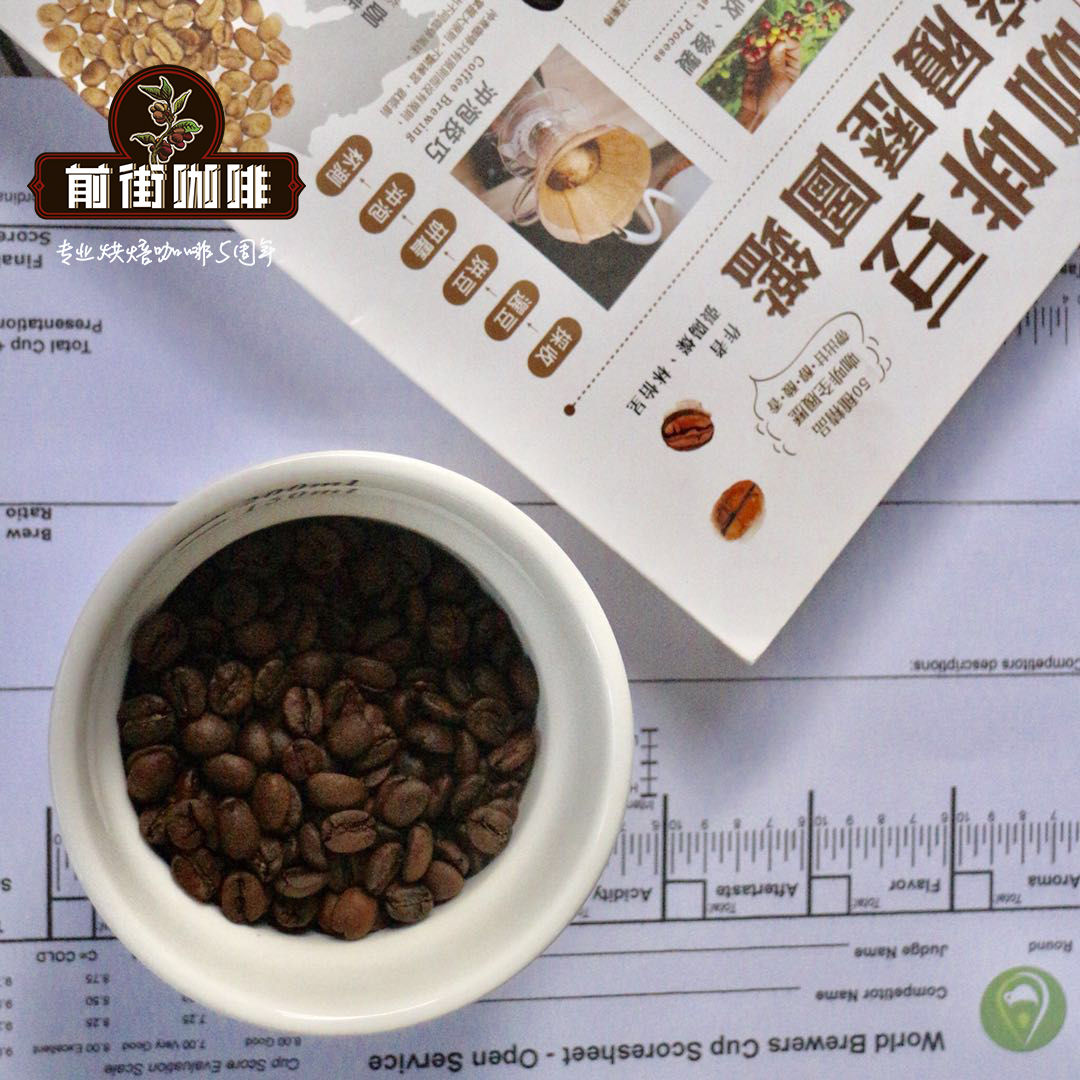The advanced play of individual coffee-try to create your own "signature coffee" with coffee beans

Professional coffee knowledge exchange more coffee bean information please follow the coffee workshop (Wechat official account cafe_style)
Although the blending of mixed coffee beans has a variety of purposes, the ultimate goal is a new flavor with a sense of balance.
Mixed coffee with different flavors has become the representative of various cafes.
Whether it is a boutique coffee shop with all kinds of coffee beans, a business that sells coffee beans, or a general coffee shop that pays less attention to the type of coffee, almost all of them have "mixed coffee" that is regarded as the "signature of our shop." The flavor of each store is different, but if the signature coffee is not good, it will be a disgrace for the store owner!
For stores, the use of integrated coffee beans (also known as formula beans) can modify the shortcomings of individual coffee beans, showing the flavor that most people like, while from a business point of view, formula beans are products that mix different prices to adjust the price. In addition, as a "signature coffee", a balanced flavor is of course a prerequisite, so that guests can taste the same flavor whenever they visit. In a situation where there is no guarantee that the same coffee beans will be purchased every time, it is also important to continuously reproduce the same aroma by mixing the coffee beans.
The first step in blending mixed coffee starts with mixing cooked beans.
Store operators have to consider many of the above restrictions when mixing formula beans, but when they make them at home, they simply pursue and create their own favorite flavor, which is a very pleasant process. Next, let's take a look at the steps of actually mixing mixed coffee.
The most basic way is to mix the cooked beans and then grind and cook them. If you first mix raw beans and start baking, it is easy to bake unevenly because you need to bake raw beans with different particle size and water content at the same time. As for large enterprises or factories that need to make a large number of integrated coffee, because roasting in batches according to the type of raw beans is time-consuming and costly, they sometimes adopt the method of mixing raw beans before baking; however, that is something that can only be achieved under many conditions such as large equipment, and it is not generally handled in this way.
When mixing raw beans, portions are usually calculated in terms of "volume" rather than weight. Measuring spoons can be used as the basis for home production. If you want to mix the proportion of 1:1, 1 tablespoon of each of the two kinds of raw beans; if you want to mix the proportion of 2:3, scoop 2 tablespoons of one kind of raw beans and 3 tablespoons of the other. It should be noted that the smaller the amount of raw beans, the greater the deviation of the finished product of the same formula, taking into account the subsequent adjustment or reproducibility, there should be a certain amount when mixing raw beans. Even at the stage of trying to mix, mix enough raw beans to make several cups of coffee.
Mixed extract to measure taste change
If you want to enjoy mixed coffee at home, another easy and enjoyable way is to mix coffee powder.
If you want to be simpler and faster, mixing the extracted coffee liquid is also a good way; you don't have to brew it cup by cup, and you can quickly try various combinations and observe the changes in each formula. However, rather than tasting the finished product, this method should be seen as a skill in thinking about blending proportions. In addition, the blending ratio of coffee liquid is not equal to the mixing proportion of coffee beans, and some adjustments must be made when the proportion found by liquid blending is changed to coffee beans.
First start from the mixed extract, taste the change of the type or proportion of coffee beans, determine the direction of deployment, and then enter the stage of mixed coffee powder; after adjusting the formula ratio many times, and then upgrade to the stage of mixed cooked beans. Going back to the source step by step may be a way to avoid taking the wrong road and find your own preferences.
Coffee shops prepare mixed coffee for different purposes. The minimum unit benchmark for self-mixing coffee beans at home is 1 spoon. The mixing ratio of the coffee liquid after mixing and extraction can be easily changed, so take this as the first step in blending coffee.
Master the four essentials of blending beans
At the first challenge, just mixing randomly can't show the flavor you want. Here are the key points and recommended recipes that should be mastered when making comprehensive coffee.
Key points of success in making mixed Coffee
First of all, decide the basic beans
Add coffee beans with distinct personality contrast
Mix 2 or 4 kinds of coffee beans
Combine coffee beans with the same roasting degree
Determine the basic beans, properly match to highlight the personality and depth
When mixing mixed coffee, the first step is to "decide the basic beans". Beginners can choose coffee beans with a well-balanced flavor, such as Brazil or Colombia.
Then it is paired with coffee beans with distinct personality contrast or different producing areas. So that their respective advantages do not conflict, but also complement each other, showing a deep flavor. The kinds of coffee beans can be mixed with about 2 or 4 kinds. Too many items will blur the taste of the spindle. In addition, please start mixing at the same proportion. It will be easier to adjust the taste later.
When preparing coffee beans, it is necessary to record the type of beans, baking degree, formula proportion, taste evaluation and so on. Help yourself find the direction you like, or improve reproducibility.
The baking degree is inconsistent, and it is easy to produce uneven taste.
Roasting degree is another important factor affecting the taste of comprehensive coffee, since the taste of coffee is generally determined by roasting degree, it should also be taken into account when preparing comprehensive coffee. If you pursue the taste, choose shallow baking, pay attention to aroma and sour taste, choose medium baking, and choose deep baking if you prefer bitter and rich tastes. in short, it is best to determine the flavor bias before blending.
Coffee beans with different roasting degrees are like liquids with different specific gravity that are difficult to mix. Not only is the taste difficult to balance, but even the upper and lower layers of the same cup of coffee may taste uneven. Although some baristas will deliberately use coffee beans with different roasting degrees, it is recommended that beginners choose the same roasting degree to reduce the probability of failure. Also, even if the baking degree marked on the package is the same, the baking standards of different bean bakers are still somewhat different. Choosing to buy from the same store can further reduce the difference in baking degree.
Pursue self-preference or jump out of the theory and find unexpected good flavor.
Another way to make comprehensive coffee is to use your favorite coffee beans as the basic beans to make up for the lack of aroma. Therefore, you should usually pay attention to the taste of your favorite coffee, and it is also important to understand the characteristics of coffee beans.
In addition, jumping away from book theory and enjoying accidental discovery is also the essence of blending original comprehensive coffee. Blindly combining favorite coffee beans may not necessarily produce a favorite flavor; on the contrary, sometimes adding originally annoying coffee beans may create an unexpected good flavor. Interestingly, the use of different extraction utensils can also change the taste of mixed coffee.
Content source = "details of perfect coffee: from raw bean resume, cup taste test, baking and grinding to brewing and extraction, every step is accurate", published by dialect culture.
Qianjie coffee: Guangzhou bakery, the store is small but a variety of beans, you can find a variety of unknown beans, but also provide online store services. Https://shop104210103.taobao.com
Important Notice :
前街咖啡 FrontStreet Coffee has moved to new addredd:
FrontStreet Coffee Address: 315,Donghua East Road,GuangZhou
Tel:020 38364473
- Prev

How do you make espresso? What is the channel effect? How would you like your espresso?
Professional coffee knowledge exchange more coffee bean information Please pay attention to the coffee workshop (Wechat official account cafe_style) coffee cake cracks affect the taste to make espresso, the first prevention channel (channeling): if there are cracks in the coffee cake, according to the inertia of water, it will flow away from the place with the lowest resistance. So the coffee powder on both sides of the crack will be overextracted after a certain period of time.
- Next

Does Starbucks' Yega Chefe Coffee taste good? Yega Chefe Coffee beans taste good
Professional coffee knowledge exchange more coffee bean information please follow the coffee workshop (Wechat official account cafe_style) Starbucks selected sun Ethiopia Yega Shirley map coffee beans Tmall price per pack of Starbucks: Ethiopia Sun Yega Snow Fei coffee
Related
- Detailed explanation of Jadeite planting Land in Panamanian Jadeite Manor introduction to the grading system of Jadeite competitive bidding, Red bid, Green bid and Rose Summer
- Story of Coffee planting in Brenka region of Costa Rica Stonehenge Manor anaerobic heavy honey treatment of flavor mouth
- What's on the barrel of Blue Mountain Coffee beans?
- Can American coffee also pull flowers? How to use hot American style to pull out a good-looking pattern?
- Can you make a cold extract with coffee beans? What is the right proportion for cold-extracted coffee formula?
- Indonesian PWN Gold Mandrine Coffee Origin Features Flavor How to Chong? Mandolin coffee is American.
- A brief introduction to the flavor characteristics of Brazilian yellow bourbon coffee beans
- What is the effect of different water quality on the flavor of cold-extracted coffee? What kind of water is best for brewing coffee?
- Why do you think of Rose Summer whenever you mention Panamanian coffee?
- Introduction to the characteristics of authentic blue mountain coffee bean producing areas? What is the CIB Coffee Authority in Jamaica?

